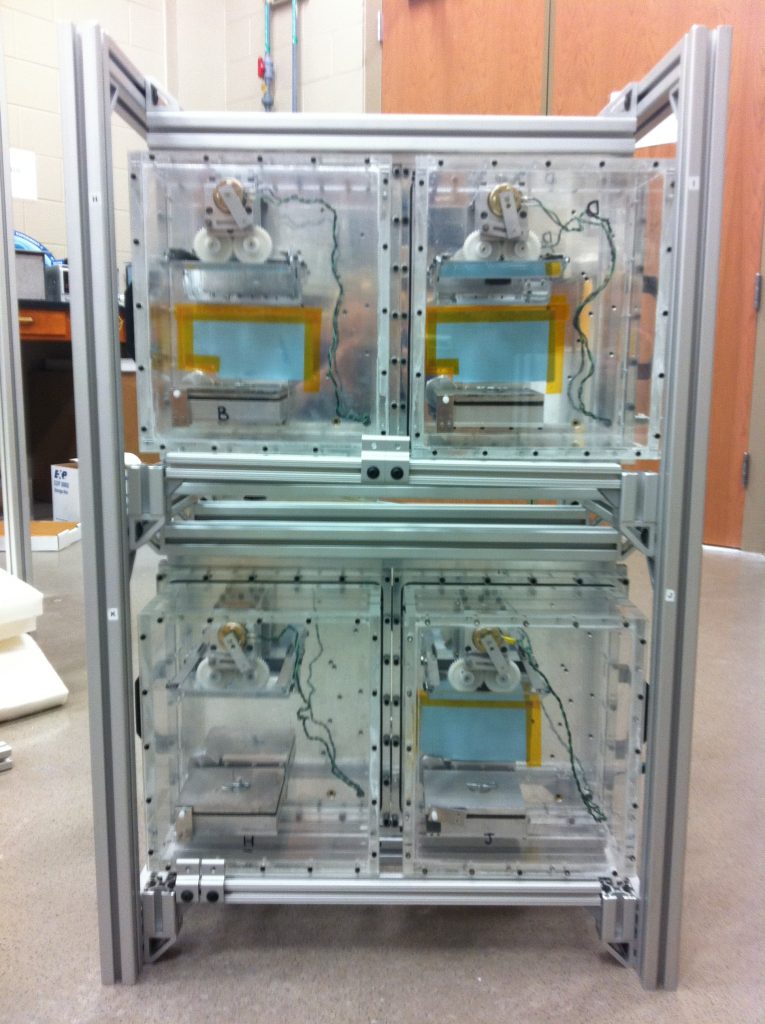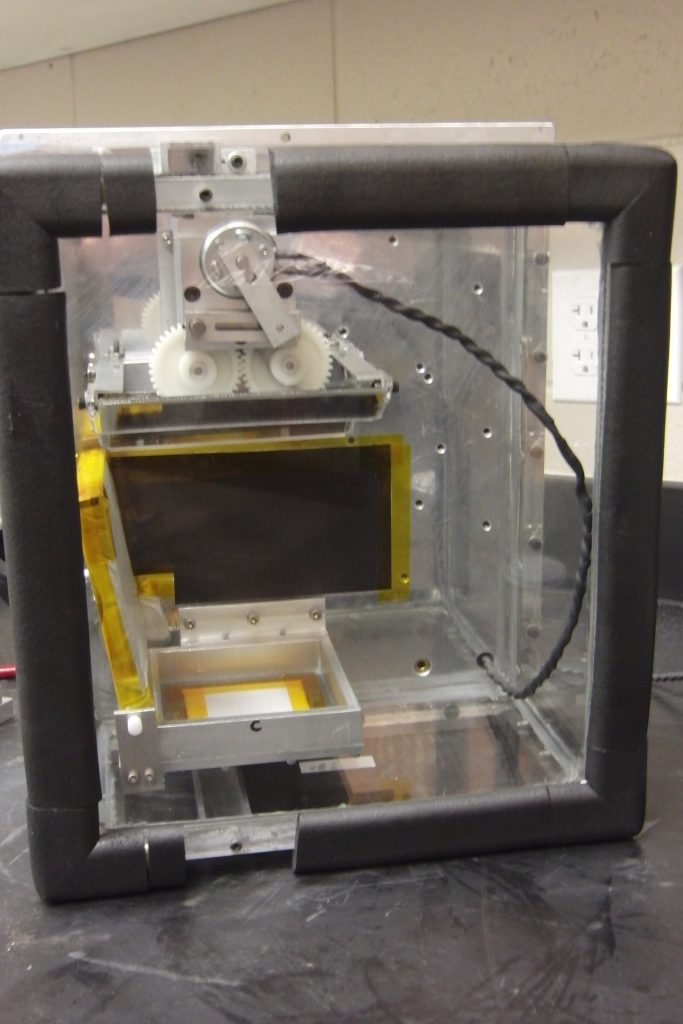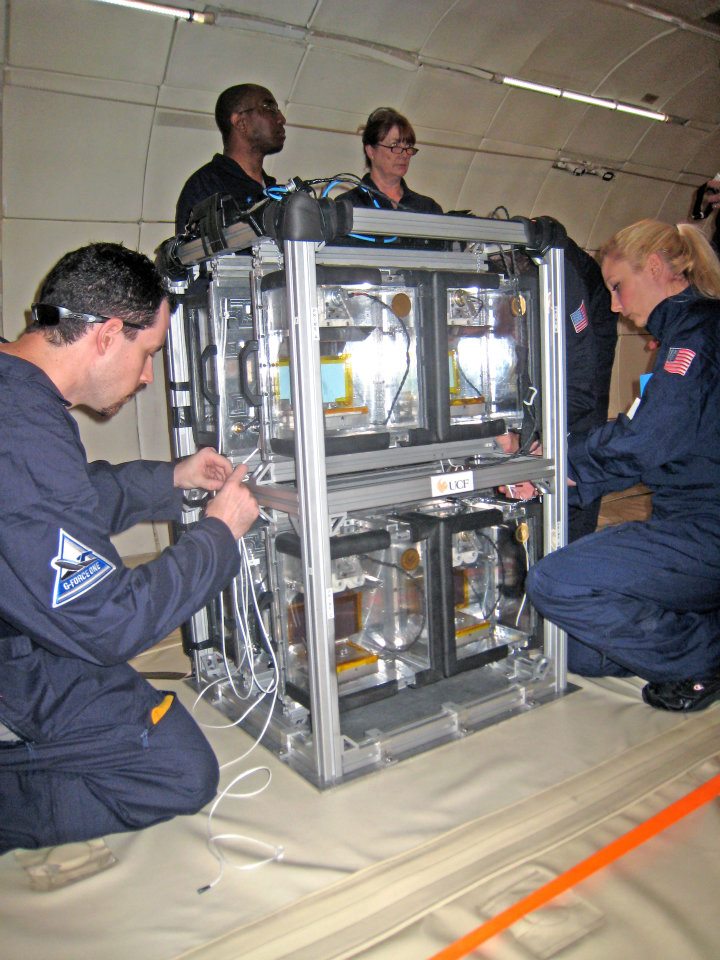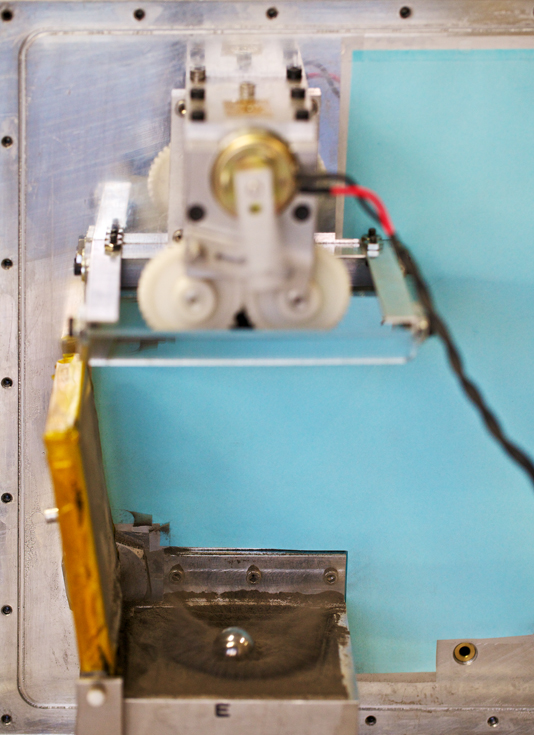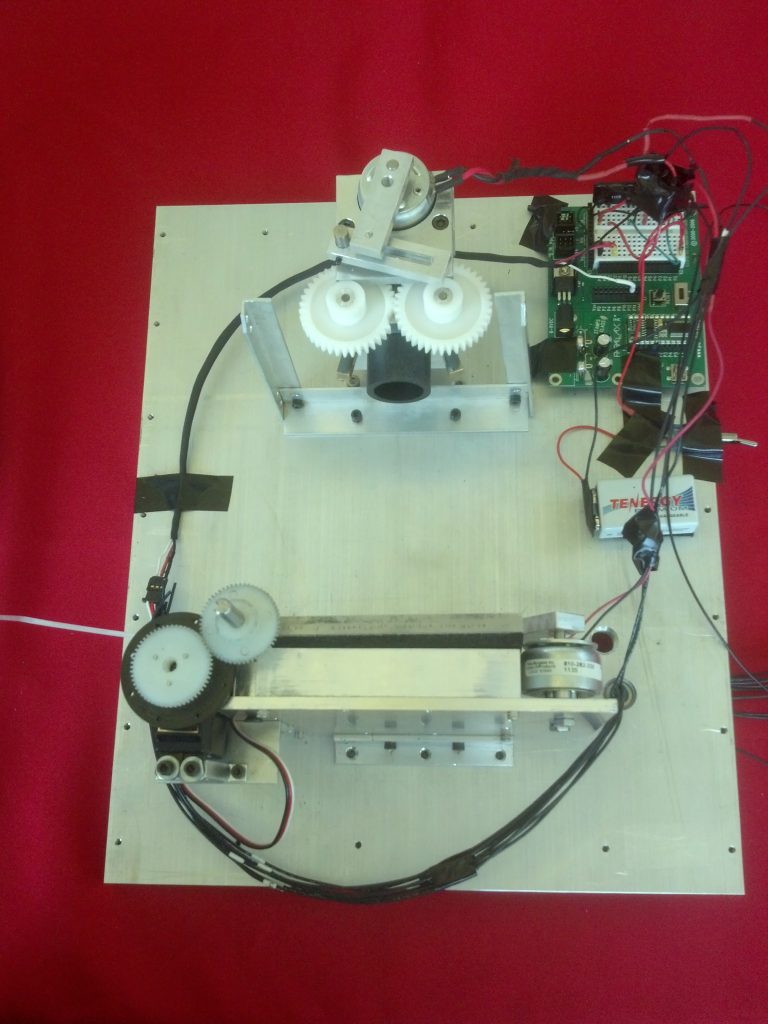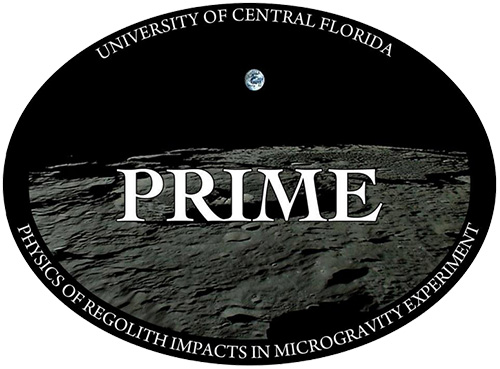
PRIME’s main focus has centered on low-velocity collisions in microgravity and has enabled the quantitative analysis of the ejecta mass and velocity produced due to these low-energy impacts. PRIME has previously flown on NASA’s KC-135 Weightles Wonder V (July 2002, August 2002, January, 2003, April 2003, and May 2003) and on Zero-G flights 210, 212, and 293. This experiment has been subjected to lunar, Martian, and 0-g conditions.
The experiment was initially designed to experience zero-gravity conditions while fixed to the aircraft. It consisted of 8 independent impact chambers that were stowed when not in use in a rack mounted to the airplane floor. A separate experiment rack, also mounted to the airplane floor, housed one impact chamber, the video head of a high speed NAC HSV 500 camera, and two strobe lights to illuminate the impact chamber. The camera and light controls are mounted on a third rack. After an impact experiment was completed, the next parabola of the airplane was used to swap the old impact chamber into the stowage rack for a new impact chamber.
Recently, PRIME has been modified to test the experimental components in freefloating conditions to obtain a lower acceleration environment than can be achieved when attached to the airplane floor. All 8 independent impact chambers are mounted separately in an experimental storage unit (ESU) which is attached directly to the aircraft floor.
Each impact chamber is fixed to the ESU via a steel locking pin which allows for the experiments to operate in two modes: fixed or free-float. While in free-float mode the impact chambers are firmly tethered to the ESU. The results of this technology test will lead to advances in our understanding of the phenomena of dust dynamics near the surfaces of asteroids and moons with low surface gravity. These objects are the targets of planned NASA missions, including OSIRIS-Rex and potential future human exploration missions. It is critical for the development of experiments, hardware, and procedures to understand the behavior of regolith in response to disturbances produced in normal exploration activities. Dust can lead to contamination of optical sensors, jamming of equipment, shorting of electrical circuits, contamination of solar power cells, as well as pose a health hazard to astronauts through inhalation if transported into living quarters. In a low-gravity vacuum environment, the behavior of regolith is qualitatively and quantitatively different than in terrestrial environments. The results of our experiment are directly relevant and beneficial to design and planning of future missions by improving our understanding of the basic physics of such planetary regolith.
PRIME Publications:
Ejecta from impacts at 0.2 – 2.3 m/s in low gravity
Gallery
VideoS

Video of a Prime impact into JSC1 Lunar Simulant.

Video of a Prime impact into Sand.

Video of a Prime impact into Sand.

